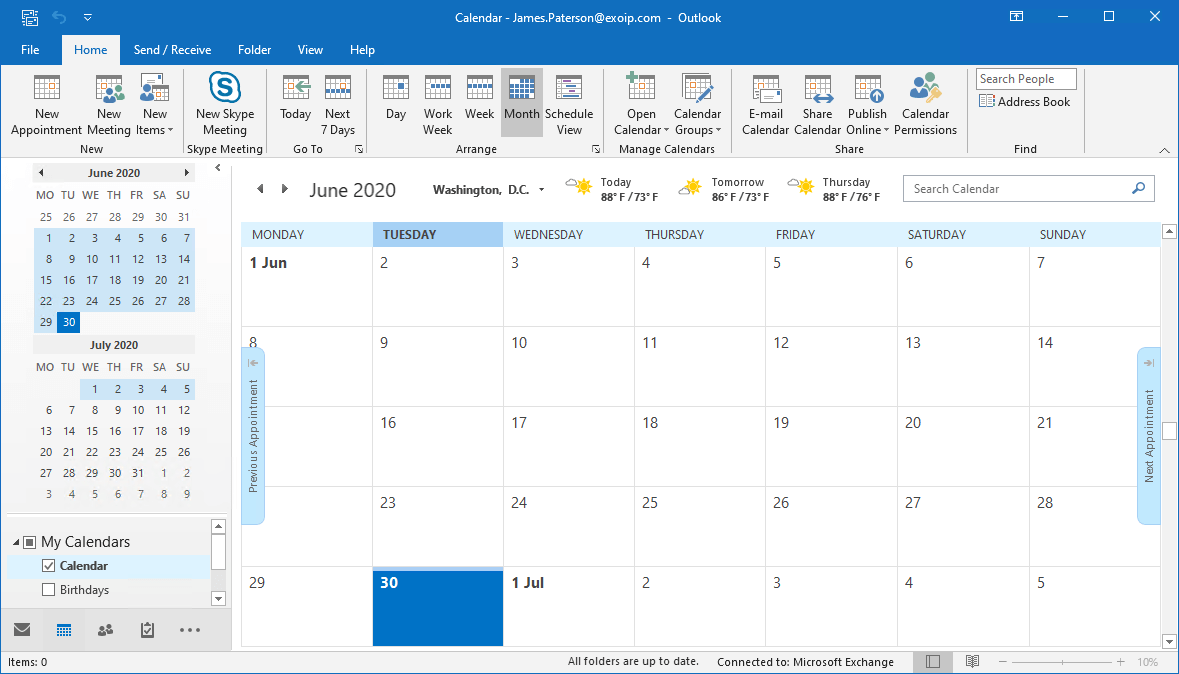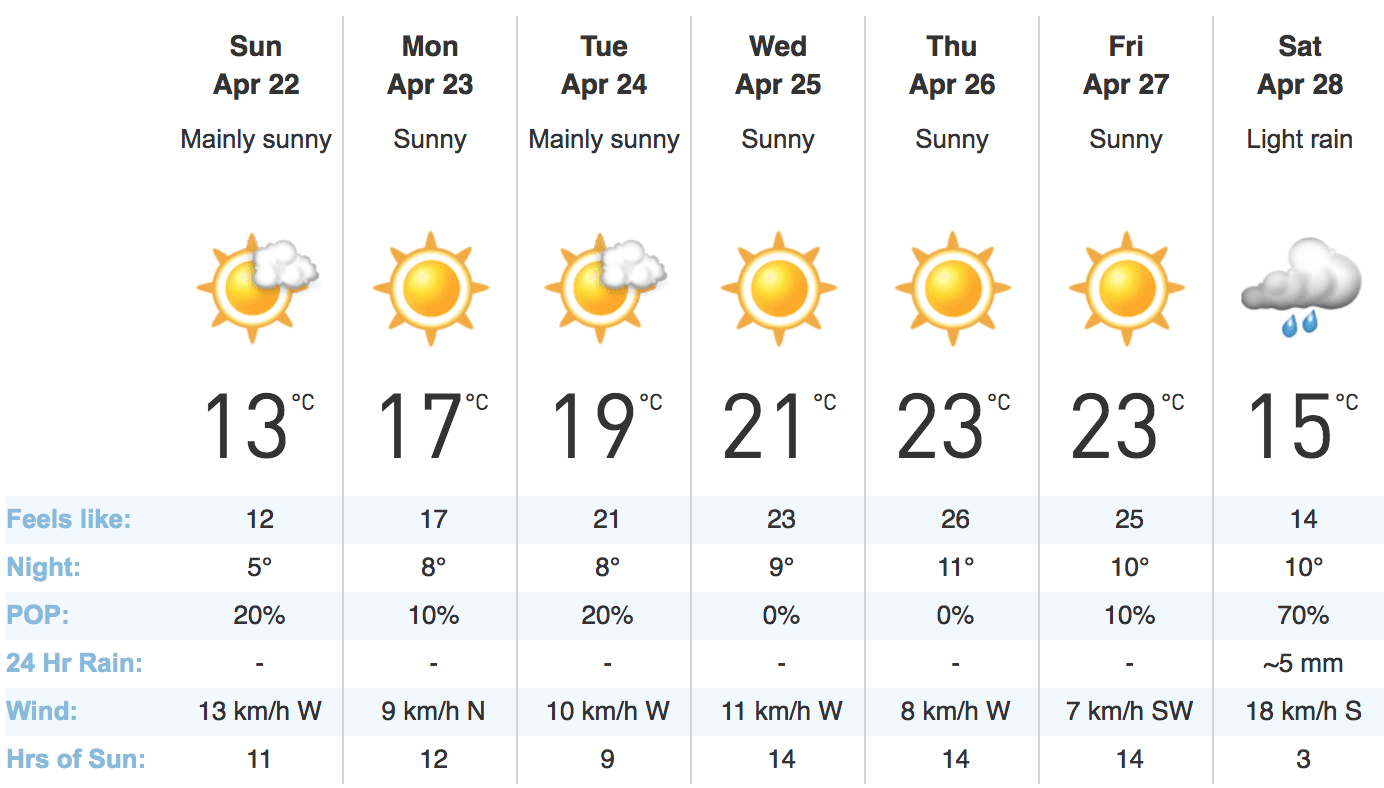The sweltering summer culminates in August and thunderstorms may occur each afternoon or, sometimes, late at night. The average precipitation this month is 7.83 inches, so check the weather radar before heading to the theme parks and don't forget to pack your rain gear. During the middle of the year, hot temperatures and high humidity in Central Florida are commonplace and can be exhausting for unprepared visitors. Even at night after the sun has disappeared, the humidity can be unpleasant and draining, so be sure to drink plenty of fluids and take it slower when touring the theme parks.
Afternoon thunderstorms are daily occurrences, so consider hitting the parks early, taking a midday break, and then returning to enjoy the late evening summer hours. The average daily humidity in Orlando hovers around 74% and rarely falls below 50%. If you live in a less humid climate, the humidity will be very noticeable during your vacation and will make the temperatures feel much warmer than they actually are. Orlando, FL live road conditions and updates are included - as well as any NWS alerts, warnings, and advisories for the Orlando area and overall Orange county, Florida.
Although most parts of the United States consider September a fall month, here in Central Florida temperatures still rival those found in early summer with high humidity and temps in the 90s. With an average precipitation of 6.02 inches, the rainy season in Central Florida is coming to an end this month, but Orlando will still receive rain almost every week. As orlando looks forward to the labor day weekend, it will face a 40 percent chance of rain for friday, according to the national weather service office in melbourne. The average minimum temperature will be 23°C, dipping to its lowest on the morning of Monday 4th at 22°C. The next 14 days will have some days seeing a little precipitation and some days with rain.
Current predictions suggest Saturday 9th will have the most precipitation with an accumulation of around 11.0mm. On the whole winds are likely to be moderate. June is the beginning of summer and the beginning of the rainy season in Central Florida. With the average precipitation doubling from May to 8.74 inches, strong storms begin to appear each afternoon. An intense thunderstorm can typically last from 30 minutes to two hours.
Don't let the rain stop you from enjoying your visit, though – pack your rain gear and an extra pair of shoes, and you'll be good to go. With humidity and rainfall at its lowest, April can be a terrific time to visit Orlando, especially as the summer tourism at theme parks will be reduced. Partly sunny with a chance of showers and a slight chance of thunderstorms. East winds 5 to 10 mph increasing to 10 to 15 mph in the afternoon. A slight chance of showers and thunderstorms early in the afternoon. A chance of showers and a slight chance of afternoon thunderstorms.
Will it rain is updated 4 times a day using the very latest data, so check back regularly to stay upto date. For more information about the weather in your location, please view the full weather forecast. Many Central Floridians feel that November is one of the best months of the year to visit the theme parks and other Orlando attractions. Pleasant temperatures in the 70s and low precipitation (averaging 2.4 inches), combined with low crowd levels , make for an awesome month to come to Orlando. October is variable and can see some very pleasant days, in terms of temperature, but can also reach the high 80s with high humidity.
Shorts and casual t-shirts are still commonly worn throughout the day, while those who chill easily might want to bring a sweater or light jacket for cooler evenings. The good news is that the average monthly rainfall is only 3.31 inches. It's usually cooler at the beginning of February but turns warmer and more spring-like by the end of the month. One of the coldest months in Central Florida, January is also one of the driest, with only 2.76 inches of precipitation on average. Finally, labor day has a high of 90 degrees and a low of 75 but the day has the highest chance of rain throughout the weekend forecast at 70% during the day and 30% at night. The calmer time of year lasts for 3.9 months, from June 2 to September 29.
The calmest day of the year is August 4, with an average hourly wind speed of 5.6 miles per hour. The hot season lasts for 4.4 months, from May 15 to September 28, with an average daily high temperature above 87°F. The hottest day of the year is July 22, with an average high of 91°F and low of 76°F.
The hottest month of the year is July, with an average high of 90°F and low of 75°F. A 40 percent chance of showers and thunderstorms, mainly after 2pm. Mostly sunny, with a high near 88. Light east southeast wind increasing to 5 to 10 mph in the morning.
One of Orlando's biggest draws is our year-round sunny, mild weather — we are in the Sunshine State, after all! What's more, Central Florida maintains a comfortable average annual temperature of 72 degrees. In addition to a weekly forecast, we've provided a handy guide to Orlando's average high and low temperatures for every month of the year, so you'll know what to expect during your visit.
A slight chance of showers and thunderstorms through late evening. As spring reaches its peak, April temperatures are very pleasant and warm, with low chances of rain. All outdoor activities are enjoyable for most visitors and residents, including swimming at the local water parks and enjoying the water rides at Islands of Adventure.
The increasing frequency of heat waves, even in the early months of the year, means that some days in April may hit temperatures in the low 90s. The warmest day over the next 25 days weather in Orlando is forecast to be Tuesday 5th October 2021 at 32°C (90°F) and the warmest night on Tuesday 5th October 2021 at 24°C (75°F). The average temperature over the next 25 days in Orlando from this forecast is 30°C (86°F) .
The average for October is 24°C (75°F). All other weather data, including cloud cover, precipitation, wind speed and direction, and solar flux, come from NASA's MERRA-2 Modern-Era Retrospective Analysis. The windier part of the year lasts for 8.1 months, from September 29 to June 2, with average wind speeds of more than 7.5 miles per hour. The windiest day of the year is March 10, with an average hourly wind speed of 9.4 miles per hour.
The cool season lasts for 2.7 months, from December 4 to February 25, with an average daily high temperature below 74°F. The coldest day of the year is January 15, with an average low of 52°F and high of 70°F. The coldest month of the year is January, with an average low of 52°F and high of 71°F.
A 50 percent chance of showers and thunderstorms. Mostly cloudy, with a low around 72. East wind around 5 mph becoming calm in the evening.
A 20 percent chance of showers and thunderstorms. Partly cloudy, with a low around 73. Mostly sunny, with a high near 90. East southeast wind 5 to 10 mph.
Sunday's weather forecast for Orlando brings a cloudy day with afternoon showers. Partly cloudy with a 70% chance for rain and thunderstorms. Dew point will be around 72F with an average humidity of 88%. Winds will be 4 mph from the ESE.
Dew point will be around 70F with an average humidity of 73%. Partly cloudy with a 60% chance for rain and thunderstorms. Winds will be 3 mph from the SE. Mostly sunny with a chance of showers and a slight chance of thunderstorms. During May, temperatures begin to reach the upper 80s and low 90s, so dress to beat the heat with cool, breathable fabrics.
Rain showers also increase this month, with an average precipitation of 3.31 inches. The tourism score favors clear, rainless days with perceived temperatures between 65°F and 80°F. The time of year with cooler water lasts for 3.7 months, from December 19 to April 11, with an average temperature below 71°F. The day of the year with the coolest water is February 25, with an average temperature of 68°F. The time of year with warmer water lasts for 4.1 months, from June 10 to October 14, with an average temperature above 79°F. The day of the year with the warmest water is August 30, with an average temperature of 82°F.
The average hourly wind speed in Orlando experiences significant seasonal variation over the course of the year. Partly cloudy with numerous thunderstorms. Winds will be 5 mph from the ENE. Partly cloudy with a chance of showers and a slight chance of thunderstorms.
Partly sunny with showers likely and a chance of thunderstorms. A slight chance of thunderstorms before sunset. Partly to mostly cloudy with scattered showers and thunderstorms in the afternoon. High 88F. Winds ESE at 5 to 10 mph. Hurricane season starts June 1st and lasts through November 30th each year, with the peak of the season from mid-August to late October. Theme parks and other Orlando attractions take all storms seriously and will close outdoor attractions when lightning or heavy rain are observed in the area.
When traveling to Central Florida during hurricane season, you may encounter travel delays or cancellations if a serious storm develops. March brings the Spring Break crowds and warmer temperatures. Average precipitation increases slightly this month to 3.78 inches, but it is not uncommon for Central Florida residents and visitors to wear shorts and flip-flops during the day. While watching the Mardi Gras parade or nighttime shows, some guests may like to have a sweater or light jacket. Weather charts displays the temperature, precipitation, pressure, wind speed and gust for next 14 days. Rainfall during winter in Orlando is also reduced, with seven hours of sunshine per day still received in Orlando.
Christmas is a popular time to visit Orlando, with days of 23°C and chilly evenings around 10°C. June is also the start of the rainy season and you can expect showers for around days in June. Thankfully it's usually quick afternoon bursts and the heat of the sun dries everything off pretty quickly. The darker period of the year lasts for 2.6 months, from November 10 to January 31, with an average daily incident shortwave energy per square meter below 4.0 kWh. The darkest day of the year is December 21, with an average of 3.4 kWh. The brighter period of the year lasts for 2.1 months, from April 3 to June 5, with an average daily incident shortwave energy per square meter above 6.1 kWh.
The brightest day of the year is May 2, with an average of 6.8 kWh. The beach/pool score favors clear, rainless days with perceived temperatures between 75°F and 90°F. The percentage of hours in which the mean wind direction is from each of the four cardinal wind directions, excluding hours in which the mean wind speed is less than 1.0 mph. The lightly tinted areas at the boundaries are the percentage of hours spent in the implied intermediate directions .
This section discusses the wide-area hourly average wind vector at 10 meters above the ground. The wind experienced at any given location is highly dependent on local topography and other factors, and instantaneous wind speed and direction vary more widely than hourly averages. The figure below shows you a compact characterization of the entire year of hourly average temperatures. The horizontal axis is the day of the year, the vertical axis is the hour of the day, and the color is the average temperature for that hour and day.
In Orlando, the summers are long, hot, oppressive, wet, and mostly cloudy and the winters are short, cool, and partly cloudy. Over the course of the year, the temperature typically varies from 52°F to 91°F and is rarely below 39°F or above 94°F. Winter will be milder and drier than normal, with the coldest temperatures in mid-December, early January, and early February. April and May will have near-normal temperatures, with above-normal rain. Watch for a tropical storm threat in mid-May. Summer will be slightly cooler than normal, with near-normal rainfall.
The hottest periods will be in early and mid- to late July. Watch for a tropical storm threat in early to mid-August. September and October will be cooler and drier than normal, despite a hot spell in mid-September. Expect a tropical storm threat in early to mid-September.
See long range weather forecasts for the next 60 days from The Old Farmer's Almanac! Our long range forecasts can be used to make more informed decisions about future plans that depend on the weather, from vacations and weddings to sporting events and outdoor activities. A 30 percent chance of showers before 8pm. Mostly cloudy, with a low around 74.
A slight chance of thunderstorms before 8pm. Partly cloudy, with a low around 71. A slight chance of thunderstorms. Partly sunny, with a high near 89. Next week, rain coverage will remain at 50% with afternoon showers and isolated thunderstorms across central Florida. Mostly clear with numerous thunderstorms.
Dew point will be around 70F with an average humidity of 86%. Mostly clear with a chance of showers and a slight chance of thunderstorms. Sun and clouds mixed with a slight chance of thunderstorms during the afternoon.



























No comments:
Post a Comment
Note: Only a member of this blog may post a comment.